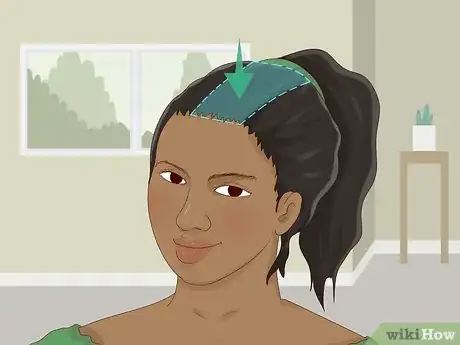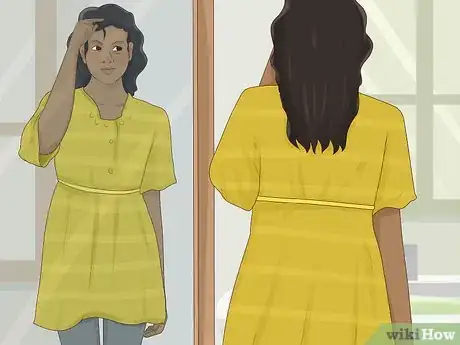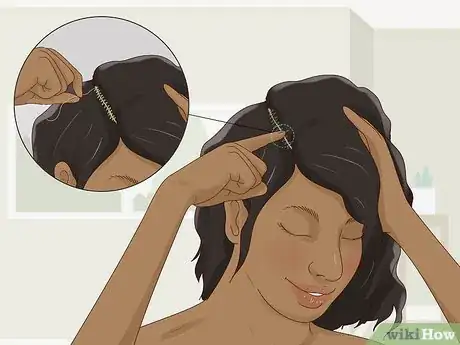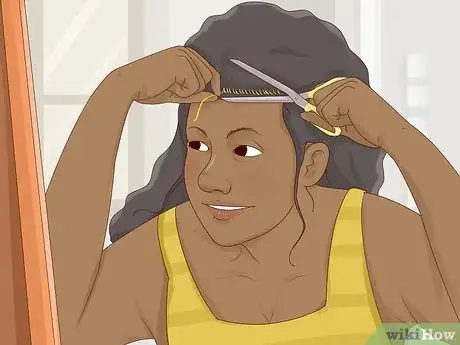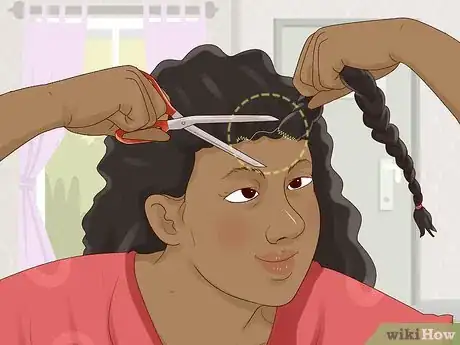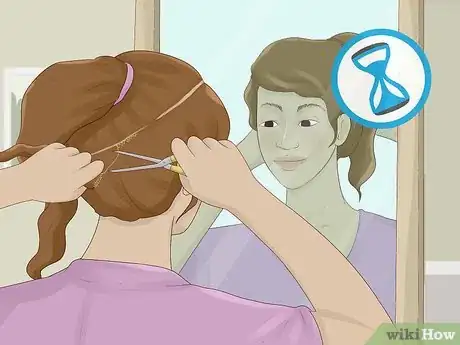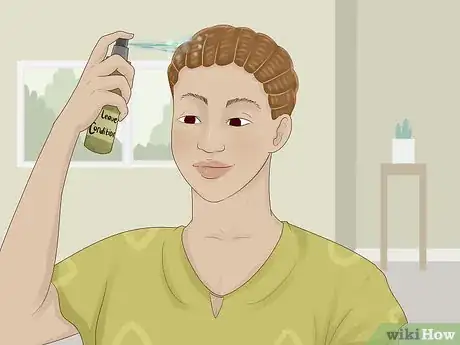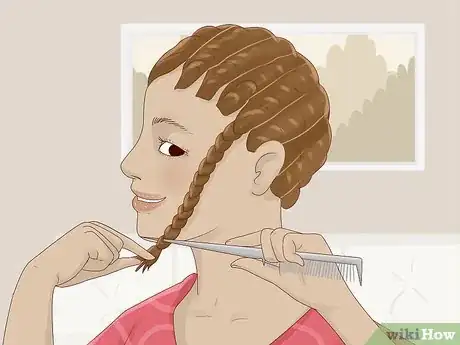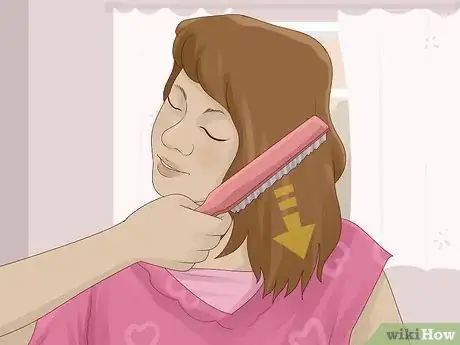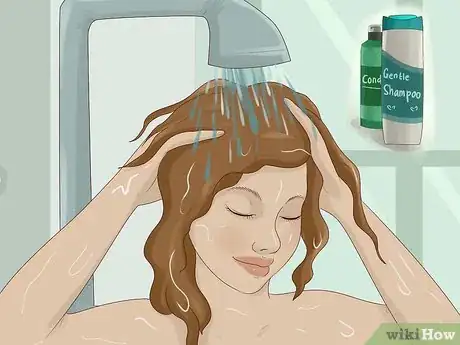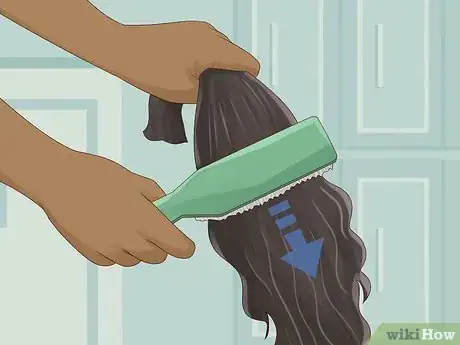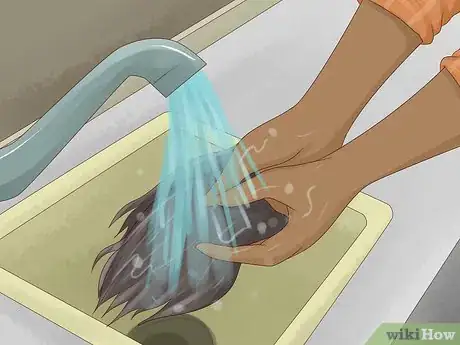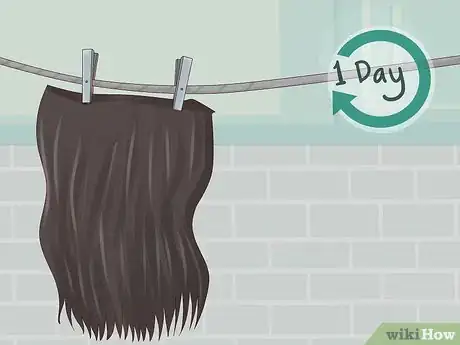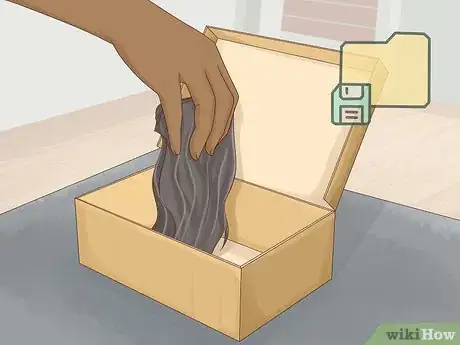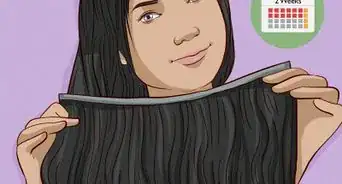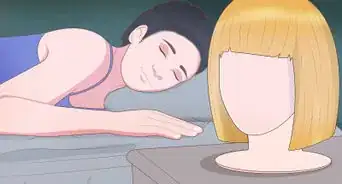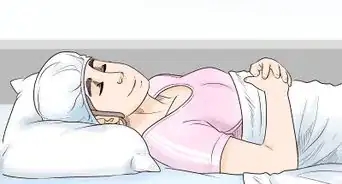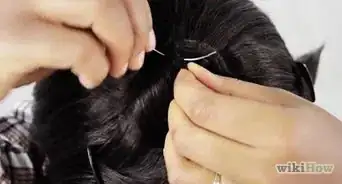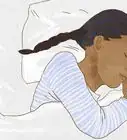This article was co-authored by Tiffany Pate. Tiffany Pate is a Licensed Cosmetologist and the Owner and CEO of Pretty Professional Hair based in Tampa, Florida. With more than 17 years of experience, she specializes in wig, weave, and hair extension installation. Additionally, she provides care that maintains healthy hair.
There are 13 references cited in this article, which can be found at the bottom of the page.
This article has been viewed 18,526 times.
If you're ready to remove your weave, taking it out is actually very simple and requires very few tools. Use your fingers to find the threads connecting the tracks to your hair, and cut them loose with scissors. After all of the tracks are out, take your braids out to give your hair a deep clean and condition. Store your extensions in a dry, dark place so they're ready for the next time you want to use them.
Steps
Removing Your Weave
-
1Start at the top of your head and work your way down. If you have a lace front closure on the top of your head, this is what you’ll start taking out first. Removing the tracks going from the top of your head to the bottom will make it easier for you to see what you’re doing, as well as keep track of which sections are undone.[1]
-
2Position yourself in front of a mirror so you can see your head clearly. If you’re taking your weave out yourself, it’s important that you’re able to see what you’re doing to help make sure you don’t accidentally cut your hair instead of the thread that's connected to the extensions.[2] Stand in front of a bathroom mirror or sit at a vanity if possible.[3]
- Have someone help you take the tracks out instead, if desired.[4]
Advertisement -
3Use your fingers to feel for the thread. Starting at the front of your hairline, begin feeling for pieces of thread that are holding the tracks in place. Once you think you have a thread, tug on it a little to separate it from your hair and the track.[5]
- The looser you can get the thread with your fingers, the easier it’ll be to cut.
-
4Cut the thread using scissors or a similar cutting tool. A seam cutter works well if you have one available, but scissors with a fine point will work too. While holding onto a thread with your fingers, cut it carefully using the scissors or seam cutter, making sure you don’t cut your natural hair.[6]
- As you cut the threads, your lace front closure or tracks will begin to come loose.
-
5Continue cutting pieces of thread until each track is cut loose. Keep feeling for pieces of thread and pulling them straight outwards to make it easier to cut them. Do this going across your entire head, until you’ve removed each track.[7]
- After you cut a thread, it’s likely that part of the track will just unravel on its own, making it unnecessary to cut every single thread.
- Remove your weaving cap once all of the tracks are off if you used one.
-
6Take your time so you don’t accidentally cut your natural hair. This can be a tedious process, so avoid rushing to get it done faster. Go slowly and focus on cutting only the threads, not your hair or the tracks.[8]
- When you’re taking the weave out of the back of your head where it’s harder to see what you’re doing, go extra slow and rely on your fingers to find the pieces of thread by pulling on them first.
Detangling and Washing Your Hair
-
1Spray your hair with a leave-in conditioner to moisturize it. Since your hair hasn’t had a good clean in a while, it’ll likely be dry and easily damaged if you’re not careful with it. Spray your hair with a leave-in conditioner or other moisturizer for hair to avoid any breakage when you go to take the braids out.[9]
- Look for a leave-in conditioner at your local big box store or beauty store.
- Spray your entire head to be sure all of your hair is moisturized.
-
2Use a rattail comb to undo your braids. Begin taking your braids out starting on one side of your hair, using the tip of a rattail comb to loosen the braids. Do this in front of a mirror to help you see where each braid is, or use your fingers to feel around your head for the next braid.[10]
- Use your fingers to take your braids out instead of a comb, if desired.
- If there are any threads still connected to your hair, they’ll come loose as you take out your braids.
-
3Detangle your hair gently using a comb or other type of brush. Once all of your braids are out, use a comb, tangle tamer, or your favorite brush to gently comb out your hair. Go around your entire head, making sure there aren’t any knots in your hair.[11]
- Detangling your hair before washing it will help make sure it doesn’t form additional knots once it gets wet that are more difficult to get out.
- Don’t be alarmed if your hair is shedding a lot—this is normal!
-
4Wash your hair so it’s fresh and clean. Now that your weave is out, care for your scalp and hair by giving it a deep clean. Wash your hair with a gentle shampoo and condition it to help give it some shine and moisture.[12]
- If you had any glue in your hair from a lace closure, it will wash out in the shower.
Caring for and Storing the Extensions
-
1Detangle your extensions using a brush or comb. Gently brush out each track extension using a comb or your favorite brush. Make sure all of the knots and tangles are out of each strand.[13]
- Spray a gentle conditioner onto your hair extensions to make detangling them easier, just as you did with your natural hair.
-
2Wash your extensions in the sink to store them clean. To have them ready to be worn again the next time, wash each extension with a gentle shampoo and rinse them out thoroughly. Fill your sink with warm water and suds from a shampoo, and lap the water onto your extension as you hold the top. Gently rub the strand of hair to clean it with soapy water.[14]
- Avoid using super hot water as you wash the extensions.
- Look for shampoo that’s safe for hair extensions and is sulfate-free.
-
3Lay the extensions flat to dry for at least 1 day. Set the extensions on a soft, absorbent towel, spreading them out so that the full strand of hair is laying flat. It’s important to make sure the extensions are completely dry before storing them, so let them sit out for at least 1 full day.[15]
-
4Store the extensions in a dry, dark place. Place the extensions in a shoebox or storage bag so that they’re well-protected. Keep them out of direct sunlight so they don’t become discolored.[16]
- If desired, you can tie your hair into bundles, organizing them by length.
References
- ↑ https://www.youtube.com/watch?v=0W2ONEd72Wg#t=2m12s
- ↑ Tiffany Pate. Licensed Cosmetologist. Expert Interview. 9 November 2021.
- ↑ https://www.youtube.com/watch?v=gVfaFlCvgCI#t=59s
- ↑ Tiffany Pate. Licensed Cosmetologist. Expert Interview. 9 November 2021.
- ↑ https://www.youtube.com/watch?v=fKnDH_pblMk#t=40s
- ↑ https://www.youtube.com/watch?v=0W2ONEd72Wg#t=2m15s
- ↑ https://www.youtube.com/watch?v=0W2ONEd72Wg#t=3m45s
- ↑ https://www.youtube.com/watch?v=0W2ONEd72Wg#t=2m21s
- ↑ https://www.youtube.com/watch?v=gVfaFlCvgCI#t=3m25s
- ↑ https://www.youtube.com/watch?v=4xTLyE09S5Y#t=3m
- ↑ https://www.youtube.com/watch?v=gVfaFlCvgCI#t=4m50s
- ↑ https://www.youtube.com/watch?v=gVfaFlCvgCI#t=5m24s
- ↑ http://beautifullybrown.com/storing-weave/
- ↑ https://www.youtube.com/watch?v=sn8JKzwQxiU#t=1m28s
- ↑ http://beautifullybrown.com/storing-weave/
- ↑ http://beautifullybrown.com/storing-weave/
